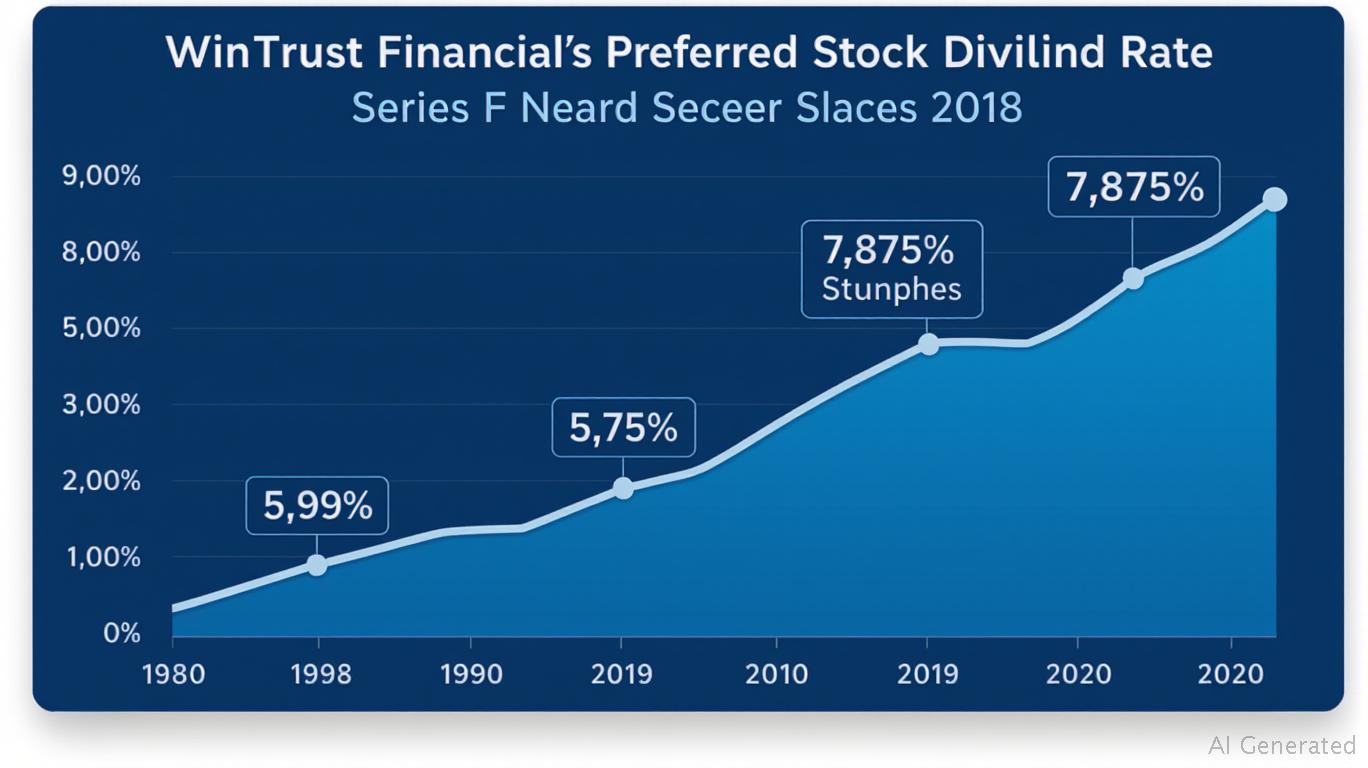Wintrust Financial's Preferred Offering: A Strategic Move to Restructure Capital and Optimize Yield
Wintrust Financial Corporation (WTFC) has entered the market with a $425 million preferred stock offering (WTFCN), marking a pivotal step in its capital restructuring strategy. The Series F Non-Cumulative Perpetual Preferred Stock, priced at 7.875% annually, offers investors an attractive yield while enabling Wintrust to refinance existing debt and align its capital structure with evolving market conditions. This analysis explores how the offering balances strategic refinancing with yield optimization, while weighing the risks that accompany its unique terms.

Strategic Capital Restructuring: A Shift Toward Flexibility
Wintrust's move to issue Series F preferred shares reflects a deliberate strategy to replace older, potentially costlier debt. The proceeds will be used for general corporate purposes, including the redemption of portions of its Series D and E preferred stocks—a step that could lower its overall interest burden. By accessing capital at a fixed rate of 7.875% for the next seven-and-a-half years, Wintrust locks in savings relative to higher rates embedded in its existing preferred stock.
The decision to issue perpetual non-cumulative preferred stock also signals a focus on regulatory flexibility. Perpetual instruments lack maturity dates, avoiding refinancing risks, while the non-cumulative feature allows the bank to skip dividends if capital conservation is needed—a safeguard during economic downturns. This aligns with the Federal Reserve's emphasis on resilient capital structures for
.Yield Optimization: A High Starting Rate with Reset Potential
Investors in
are immediately rewarded with a 7.875% annual dividend, a compelling yield in an environment where 10-year Treasury notes hover around 3.8%. The structure's reset mechanism adds long-term appeal: after July 15, 2030, the dividend rate will reset every five years to the five-year U.S. Treasury rate plus a 3.878% spread. This formula positions the stock to benefit from rising rates, though it also introduces reinvestment risk if rates decline.The first reset in 2030 is a critical inflection point. If Treasury yields remain elevated or climb further, the reset could sustain or boost the dividend. Conversely, a prolonged decline in rates could compress returns. However, the 3.878% spread ensures a buffer against modest rate drops.
Risks and Considerations
While the offering presents opportunities, several risks merit attention:
1. Non-Cumulative Dividends: Unlike cumulative preferred stock, unpaid dividends are not owed to holders if Wintrust skips a payment. This risk is heightened during periods of regulatory stress or earnings volatility.
2. Interest Rate Sensitivity: Post-2030 resets expose investors to market-rate fluctuations. A prolonged low-rate environment could reduce payouts.
3. Redemption Risk: Wintrust can call the shares starting in 2030, potentially forcing investors to reinvest proceeds in a lower-yield environment.
4. Regulatory Dependency: Federal Reserve approval is required for any redemptions, adding uncertainty to liquidity planning.
Investment Takeaways
For income-focused investors seeking a high-yielding, low-volatility asset, WTFCN offers immediate appeal. The 7.875% dividend provides a strong current return, while the reset mechanism introduces a potential hedge against rising rates. However, this is not a “set-it-and-forget-it” investment: holders must monitor Treasury rates and Wintrust's capital priorities post-2030.
Recommendation:
- Buy for Income: The current yield makes WTFCN attractive for conservative investors willing to accept non-cumulative risk.
- Hold for the Long Term: Investors should plan to hold past the 2030 reset date to benefit from potential rate-linked upside.
- Avoid if Rate-Hedging Is a Priority: Those seeking fixed-rate certainty may prefer Series D or E shares, though they offer lower yields.
Conclusion
Wintrust's Series F preferred offering is a masterstroke of capital management, balancing refinancing needs with investor yield expectations. While risks exist, the combination of an 8% starting dividend, a reset mechanism tied to Treasuries, and a 15-year runway before the first reset creates a compelling entry point. For income seekers with a multi-decade horizon, WTFCN deserves serious consideration—but with eyes wide open to the structural trade-offs.
As always, consult a financial advisor before making investment decisions.
Sign up for free to continue reading
By continuing, I agree to the
Market Data Terms of Service and Privacy Statement

Comments
No comments yet